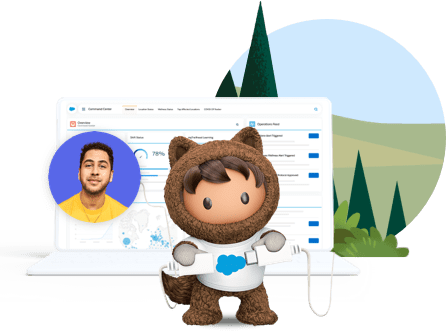Audit Technology and Process — Where are your Gaps?
Determine where technology holds teams back from delivering on customer centricity, and how to move forward.

By this point in your transformation, you have started the process of working collaboratively with a cross-functional team of stakeholders to decide what customer and employee experiences need to change, and how.
As you build your innovation roadmap and prioritise the customer and employee experiences to optimise, you will need to audit current business capabilities and the tools each department is currently using. This will help inform where you may be able to consolidate solutions or offer alternatives to future-proof the company from point solutions that don’t connect.
Map out use cases.
A critical part of this effort is identifying where current business capabilities are falling short in delivering the desired experience for your customers. By auditing process, information, and capability gaps, you can align on what technologies you may need to sunset, consolidate, integrate, or adopt to make it possible.
As the saying goes, start with the end in mind. We recommend mapping desired customer and employee scenarios, or use cases, and outlining the people, process, and technology required to make those experiences possible. Your current tech stack may serve some pieces of the journey, but prohibit others. Understanding these gaps will then help you identify potential solutions to incorporate into your strategic roadmap.

As part of this process, you will also want to identify business-critical legacy systems that need to be accounted for. They may not be going anywhere soon, so you need to think about integrations to connect critical legacy tools with modern CRM to create a single, shared customer view.
(More on that in the next chapter.)

Think shared, not siloed.

Tip: Put a process in place to ensure IT is involved in all technology decisions before new solutions are purchased so they can assess ease of integration with other tools. IT should have a bird’s-eye view of technology across the organisation and should support systems governance.
As discussed earlier in this guide, it’s not uncommon for CRM decisions to be made tactically, department by department. That approach no longer needs to be the case as the right CRM system can be a powerful solution that actually helps to bridge silos — enabling all your teams to build and manage customer relationships across every phase of their journey with your brand. Think about the potential benefits of having your sales, marketing, commerce, and service teams using the same system and accessing the information they need from the same dataset.
See the value of a connected CRM in action here:
A shared view of the customer will empower all your employees to respond faster to customers’ needs and engagement opportunities. It will enable you to implement a holistic, customer-centric roadmap and provide truly connected experiences for customers.
Read on to see how one of our valued customers, Spalding, has used the power of a connected CRM to build their technology roadmap.
Customer Story
Spalding

“A really great customer experience is about 90% operations and 10% front-end experience. If you can use all the data available to you to improve operations, then the front-end experience becomes significantly more impactful.”
Head of Brand Communications, Digital, and Ecommerce, Spalding
Spalding, a sporting goods company and the world’s largest basketball supplier, knows a thing or two about designing a customer-centred technology roadmap — with incredible impact. In fact, its commitment to digital innovation helped the company quickly pivot after COVID-19 stay-at-home orders went into effect, connecting customers at home with basketball equipment to “Bring the Arena to the Driveway.”
Before kicking off its digital transformation with Salesforce back in 2017, Spalding had a singular goal: to make it as easy as possible for customers to discover products, convert, and engage with the brand. Spalding designed an innovation roadmap to deliver on key customer pain points and the business use cases it wanted to solve.
Customer Priority #1: Optimise the customer experience across digital commerce, marketing, and customer service.

Commerce

Marketing

Service
Customer Priority #2: Build advocacy and drive conversion from loyal customers.

Commerce

Sales
“We’re not aiming to have a best-in-class experience in sporting goods. We’re aiming for a best-in-class digital experience, period.”
Head of Brand Communications, Digital, and Ecommerce, Spalding

Discover Salesforce Customer 360
Learn how to unite your whole company around your customers.

Webinar
Watch Now - Unlock a Personal Experience for Your Customer with Customer 360

Article
Why Hyper-Personalisation Is the Future of Customer Experience
More Resources

Guide
The Transformation Playbook

Research and Reports
State of the Connected Customer Report

Webinar
Better Together: Salesforce + Tableau - How data and insights put companies on the road to success.






